The 304 Stainless Steel Tube, omnipresent in a myriad of industries, stands as a testament to the metal's durability, corrosion resistance, and versatility.
In the quest to comprehend and appreciate its wide-ranging applications, it becomes imperative to scrutinize its unique characteristics and properties.
Delving into a discussion regarding its chemical composition, cost-effectiveness, weldability, and heat treatment process can not only provide a much-needed clarity but also help industry professionals make informed decisions on the most suitable material for their projects.
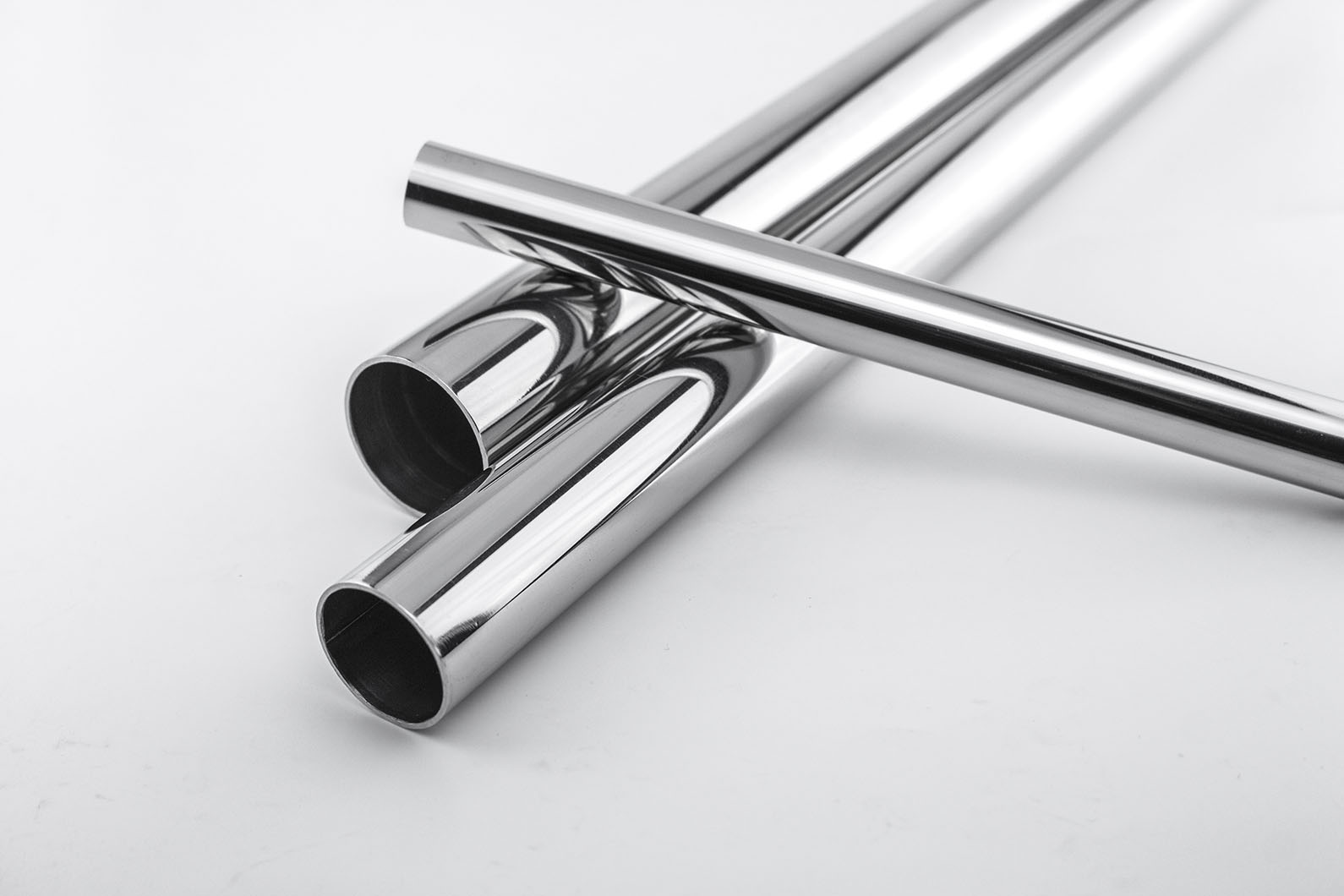
The 304 stainless steel tube exhibits certain distinct characteristics that make it suitable for various applications. These characteristics include:
In terms of durability, it exhibits both excellent wear resistance and corrosion resistance, thus offering extended longevity.
Exhibiting excellent weldability, the 304 stainless steel tube can accommodate all standard fusion processes and is particularly suited to welding without the need for filler materials. The alloy's low carbon content minimizes carbide precipitation, enhancing its resistance to intergranular corrosion.
Welding techniques: The 304 stainless steel tube allows both manual and automated welding techniques, including tungsten inert gas (TIG) and metal inert gas (MIG) welding.
Joint strength: When welded correctly, the joint strength of 304 stainless steel matches or exceeds the strength of the base material.
Heat distortion: Due to its low thermal conductivity and high thermal expansion, careful control of heat input is required to minimize distortion.
Post weld treatments: Although not always necessary, post weld annealing can be performed to maximize corrosion resistance.
Recommend: Stainless Steel Welding Issues Exploration
Stainless Steel Tubing Welding 101: Tips for Success
Stainless Steel Pipe Welding Procedure Specification
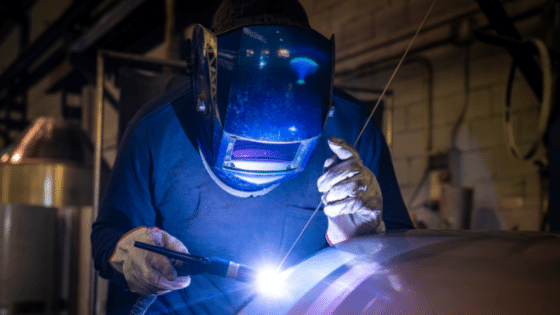
Beyond its impressive welding properties, 304 stainless steel tube also delivers fair results in machining and grinding operations. Precision machining of this material can be achieved with tooling efficiency, but considerations must be given to material selection to prevent tool wear. The surface finish resulting from machining is generally good, contributing to the tube's aesthetic appeal and functional performance.
| Machining Property | Tooling Efficiency | Surface Finish |
|---|---|---|
| Material Hardness | Fair | Good |
| Cutting Speed | Moderate | N/A |
| Tool Wear | Moderate | N/A |
| Surface Finish | N/A | Good |
Polishing techniques can further enhance the surface finish, providing a smooth and clean appearance that is often desirable in many applications. Overall, the 304 stainless steel tube offers a balance between machinability, performance, and cost.
In terms of bending and forming, 304 stainless steel tube demonstrates considerable flexibility, making it a preferred choice in applications requiring complex shapes and structures. Its adaptability shines in tube fabrication processes, where it readily conforms to metal shaping techniques without losing its structural integrity.
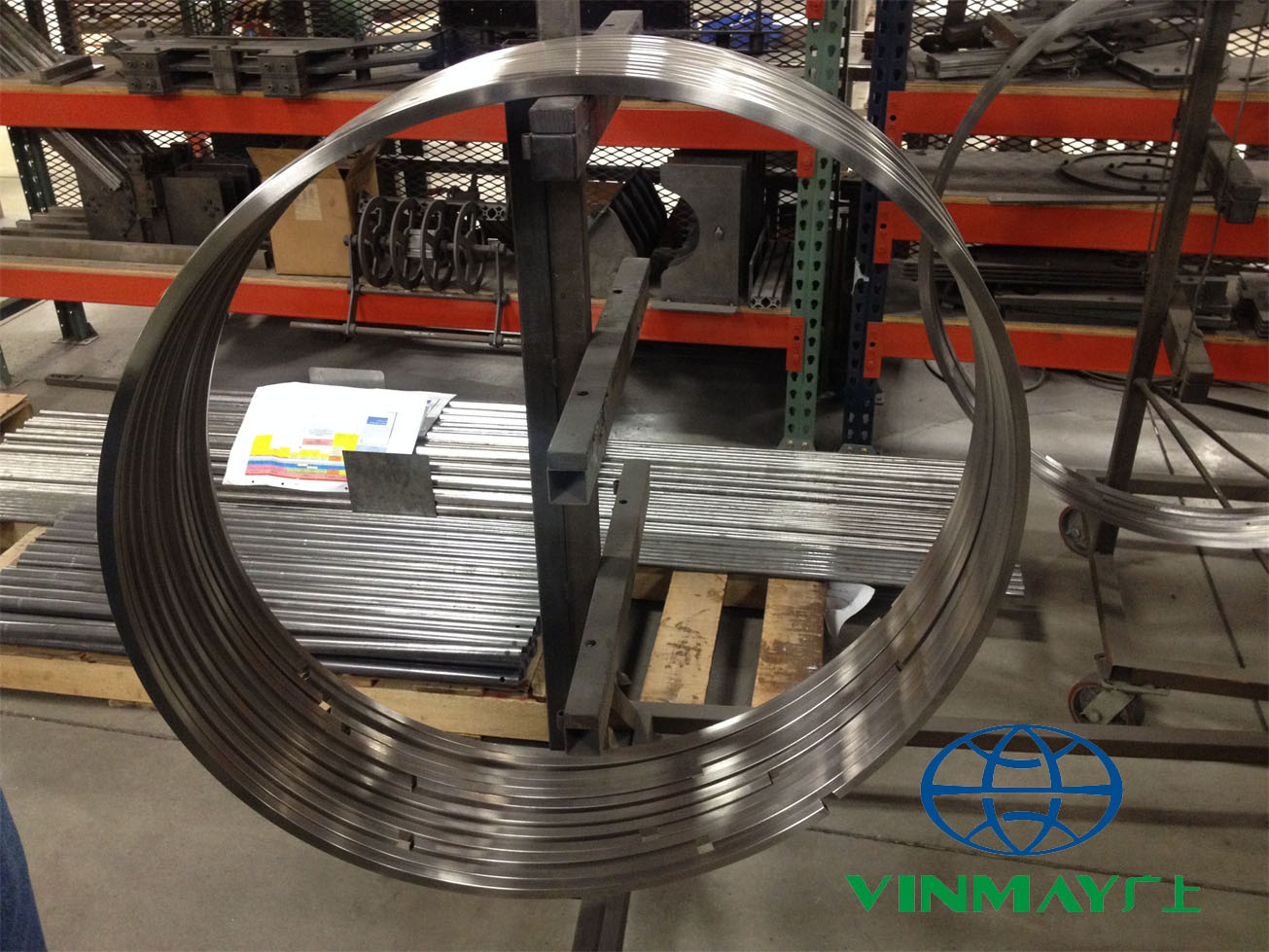
While the flexibility and formability of 304 stainless steel tube are indeed impressive, its wear resistance is another significant characteristic that sets it apart. This attribute is often gauged through abrasion resistance testing, which highlights the material's strength against physical wear.
Surface coating options also contribute to the overall wear resistance by providing an additional protective layer. These coatings enhance the steel's durability while maintaining its inherent properties.
Through impact resistance comparisons and friction wear analysis, 304 stainless steel tube consistently demonstrates superior performance.
Lastly, various techniques are used to enhance the tube's durability, reinforcing its standing as a material of choice in demanding applications.
| Testing Procedure | 304 Stainless Steel Performance |
|---|---|
| Abrasion Resistance Testing | Excellent |
| Impact Resistance Comparisons | High |
| Friction Wear Analysis | Low |
| Durability Enhancements | Substantial |
One of the key characteristics that define the 304 stainless steel tube is its exceptional corrosion resistance, which is primarily attributable to its chromium content. The chromium forms a passive oxide layer on the surface of the steel that serves as a shield against corrosion. This attribute is vital for applications where the material is exposed to corrosive environments.
Recommend: Can 304 Stainless Steel Rust?
What is food grade 304 stainless steel?
Is 304 stainless steel surgical grade ?
The Life Expectancy of 304 Stainless Steel
Beyond its exceptional corrosion resistance, the 304 stainless steel tube also exhibits specific characteristics when subjected to heat treatment. This process, often involving an annealing step, enhances the tube's sustainable durability, making it a superior material alternative in various applications.
Heat treatment results in structural changes within the steel, altering its physical and mechanical properties to improve its performance. One of the significant benefits of heat treatment is the increased strength and hardness of the material, enhancing its resilience in high-stress environments.
| Heat Treatment Step | Effect on 304 Stainless Steel Tube |
|---|---|
| Annealing process | Softening of the material and improvement of ductility |
| Thermal modification | Increased resistance to thermal stress |
| Quenching | Rapid cooling to lock in desired properties |
In essence, heat treatment amplifies the innate advantages of 304 stainless steel, optimizing its use in various industries.
The types of 304 stainless steel tube can be broadly classified into two categories: Seamless Round and Welded.
The Seamless Round 304 Stainless Steel Tubing is characterized by its uniformity in structure and strength, making it a preferred choice for high-pressure applications.
On the other hand, the Welded 304 Stainless Steel Tube, renowned for its cost-effectiveness and wide range of applications, is manufactured by rolling the raw material and welding the seam under a specialized process.
Renowned for its durability and corrosion-resistance, seamless round 304 stainless steel tubing is a highly sought-after product in various industries, from food processing to architectural structures. It provides numerous advantages, such as uniformity in structure and greater strength under pressure.
While seamless 304 stainless steel tubing offers certain advantages, its welded counterpart also presents a set of unique characteristics and applications worth exploring.
Welded 304 stainless steel tube undergoes precise tube fabrication processes, utilizing advanced welding techniques to ensure optimal structural integrity. This fabrication method enhances its mechanical properties, making it a versatile choice for various industrial applications.
The tube also benefits from surface finishing procedures, further improving its appearance and corrosion prevention capabilities. The process involves polishing and buffing the tube's surface to remove any potential impurities that could compromise its corrosion resistance.
Consequently, welded 304 stainless steel tubes offer an excellent balance of durability, aesthetic appeal, and corrosion resistance, making them ideal for a wide range of applications.
Learn More:
Stainless Steel Tube Welded VS Seamless
Characterized by its unique alloy composition, the 304 stainless steel tube exhibits a chromium content ranging from 17.5 to 19.5% and a nickel content of 8.0 to 10.5%, which significantly contribute to its corrosion resistance and durability. In addition to chromium and nickel, it also contains traces of carbon, manganese, silicon, phosphorous, sulfur, and nitrogen, making up the chemical composition of 304 stainless steel tube.
These elements bring about the following material properties:
The 304 stainless steel tube's corrosion resistance is primarily due to the presence of chromium, which forms a passive oxide layer on the material's surface when exposed to oxygen. This protective layer shields the metal from corrosive agents, making it ideal for applications exposed to various corrosive environments.
Lastly, 304 stainless steel is known for its excellent weldability. It can be welded using all standard welding techniques, without the need for post-weld annealing. This makes it a highly versatile and reliable material for a wide range of applications.
The surface finish of a 304 stainless steel tube significantly impacts its aesthetic appeal and functionality. Various finishes, including brushed, 180 grit polish, 320 grit polish, mirror polish, and dull mill finish, each offer unique properties and applications.
An in-depth exploration into these finishes will provide valuable insights into their individual characteristics, advantages, and potential uses.
In terms of surface finishes for 304 stainless steel tubes, a brushed finish is commonly employed due to its attractive visual appeal and practical functionality. This finish is achieved through a variety of fabrication methods, which can influence the material properties of the tube.
While a brushed finish offers certain practical benefits, a grit polish finish on a 304 stainless steel tube serves to enhance its corrosion resistance even further, making it an optimal choice for more demanding industry applications.
This surface finish comparison reveals that the manufacturing techniques involved in achieving a grit polish finish, notably reducing surface roughness through abrasion, result in improved material durability. Custom fabrication of the tubes often involves this finish due to its superior protective qualities.
The smooth, polished surface reduces areas where corrosive elements can take hold, affording 304 stainless steel tubes a longer operational lifespan. Hence, a grit polish finish, by augmenting the inherent corrosion resistance of 304 stainless steel, amplifies its utility in challenging environments.
Opting for a grit polish finish on a 304 stainless steel tube not only enhances its aesthetic appeal but also significantly boosts its resistance to corrosion, making it an ideal choice for rigorous industrial applications. This surface finish facilitates the tube's mechanical properties and offers diversified shape options, resulting in a versatile product.
Moving beyond the grit polish, a mirror polish on a 304 stainless steel tube affords a high-gloss finish, enhancing its aesthetic appeal and corrosion resistance even further. This superior finish is achieved through meticulous polishing techniques and advanced surface treatment methods that eliminate microscopic roughness.
The mirror finish benefits are manifold, providing a highly reflective surface suitable for numerous applications, from decorative to functional. These include architectural installations where the tube's mirror-like appearance adds to its visual appeal.
However, it's crucial to consider polished tube maintenance, as fingerprints and dust can mar the surface. Regular cleaning, avoiding abrasive materials, and using appropriate stainless steel cleaners can preserve the mirror finish's lustrous appearance, ensuring its longevity and performance.
Contrasting with the high-gloss of a mirror finish, the dull mill finish of a 304 stainless steel tube is characterized by a uniform, matte surface, which provides a practical and cost-effective solution for numerous industrial applications. This finish is achieved through particular surface finishing techniques, which employ abrasive materials to create a non-reflective surface.
Recommend:
Comparisons of hairline finish, brushed finish and satin finish stainless steel tube
Exploring the World of Polished Stainless Steel Round Tubes
In evaluating the 304 stainless steel tube, a critical aspect to consider is its mechanical properties, which provide insight into its performance under various stress conditions.
These properties, including tensile strength, yield point, elongation, shearing strength, and Brinell hardness, directly impact the tube's durability, versatility, and suitability for specific applications.
A thorough examination of these characteristics will thus facilitate a comprehensive understanding of the material's capabilities and limitations.
The tensile strength of 304 stainless steel tube, a key factor in its mechanical properties, is measured at an impressive 85,800 psi. This strength is assessed using comprehensive tensile strength testing methodologies, which provide a detailed material properties evaluation.
Tensile strength testing offers a strength analysis comparison to other materials, thus aiding in informed decision-making about its application.
The load bearing capacity assessment of the 304 stainless steel tube is crucial in determining its suitability for structural applications.
Structural integrity examination further ensures the tube's ability to withstand stress without deformation or failure.
The tensile strength is a direct indicator of the tube's ability to resist breaking under tension, reinforcing its reliability in demanding operational environments.
These assessments underscore the material's robustness, confirming its extensive usage in various industries.
Regarding the mechanical properties of 304 stainless steel tube, the yield point is a significant factor, measured at 34,000 psi. The yield point refers to the stress level at which a metal begins to deform plastically, signifying permanent deformation. This property is influenced by the alloy composition of the stainless steel, with 304 grade primarily composed of iron, chromium, and nickel.
The yield stress is directly related to the material strength, as it indicates the maximum stress the tube can withstand without permanent deformation. The tensile properties and ductile behavior of the tube, which are essential for its ability to withstand various forms of stress, are also linked to the yield point.
The yield point thus plays a crucial role in determining the tube's mechanical performance and suitability for different applications.
Elongation, a crucial mechanical property of 304 stainless steel tube, signifies its ductility by measuring the extent to which the material can be deformed (stretched) without failure, quantified here as 60% in 2 inches.
In addition to its notable elongation properties, the 304 stainless steel tube also possesses a significant shearing strength of 11,500 psi. This critical mechanical property allows the material to withstand considerable shearing forces without failure.
Advanced shearing techniques have been employed for strength analysis, revealing the robust fracture resistance of the tube. The material behavior under shear stress is a key aspect of its mechanical properties, contributing to its structural integrity and load capacity.
As the shearing forces increase, the material demonstrates commendable resilience, resisting failure mechanisms. This feature underscores the tube's suitability for applications where high shear stress is prevalent.
The ability to resist shear stress is a testament to the tube's excellent mechanical properties, enhancing its versatility in various industrial applications.
Another noteworthy mechanical property of the 304 stainless steel tube is its Brinell hardness, which stands at an impressive 170, demonstrating its ability to resist indentation and wear. This hardness index is a vital element in the material properties of stainless steel, and it's crucial in durability assessment. The Brinell hardness value is directly influenced by the surface treatment of the stainless steel tube, which ultimately impacts its resistance to wear and impact.
The 304 stainless steel tube is versatile and can be manufactured in a variety of shapes to meet different application requirements.
The most common shapes include the square tube, round tubing, and rectangular tube.
Each shape presents unique attributes which determine its suitability for specific structural, mechanical, or aesthetic functions.
Exhibiting superior versatility and robustness, the 304 Stainless Steel Square Tube serves as a popular choice for a multitude of structural applications due to its remarkable corrosion resistance and high tensile strength. This tube's material properties make it an ideal choice for tubing applications in construction, architecture, and transportation.

In contrast to square tubing, 304 stainless steel round tubing made from 304 stainless steel offers unique advantages, such as improved fluid dynamics and decreased resistance, crucial for applications involving fluid or gas transfer.

The tube fabrication process for this material leverages advanced welding techniques to ensure robustness and durability. Surface finishes are given meticulous attention to promote corrosion prevention, thereby enhancing the longevity of the tube.
The stainless steel round tube also facilitates smoother tube bending, thereby reducing the risk of material stress and potential deformation. 304 stainless steel is chosen for its balance of corrosion resistance and affordability, making it an ideal material for a variety of industries, including construction, automotive, and petrochemical.
Recommend : The Comprehensive Guide of Stainless Steel Welded Round Tube
Rectangular 304 stainless steel tubes have a distinct shape that offers unique advantages in specific applications, such as structural support and aesthetic appeal in construction, as well as fluid and gas flow efficiency in industrial settings.
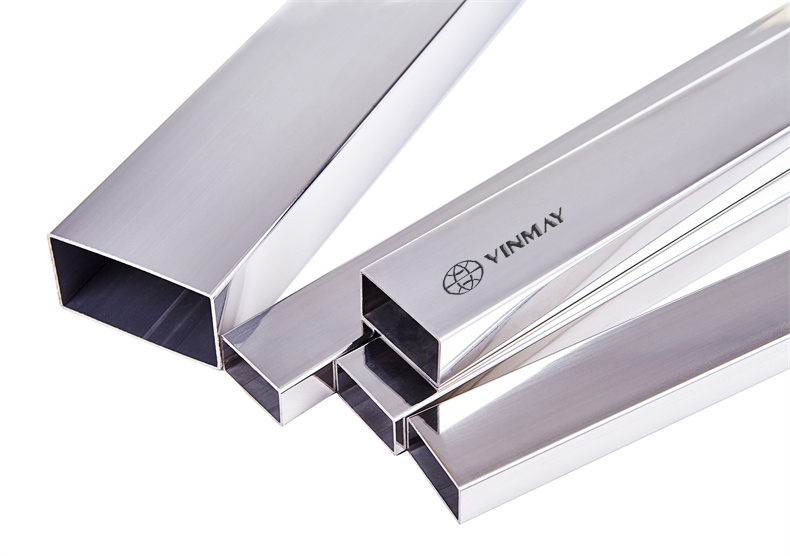
Recommend: The Ultimate Guide to Rectangular Tube Stainless Steel
304 Stainless Steel Rectangular Tube Size: Unveiling Industrial Precision
The 304 Stainless Steel Tube finds extensive use in various industries due to its mechanical and chemical properties.
It is integral in the construction sector for frame work, braces, and supports, due to its high durability and resistance to corrosion.
Furthermore, its non-reactive nature makes it suitable for applications in the marine and food industry where it is exposed to harsh environments and needs to maintain sanitary conditions.
Owing to its remarkable corrosion resistance and excellent structural integrity, 304 stainless steel tube frequently serves as an essential material in various types of framework applications. The structural strength of these tubes makes them ideal for heavy-duty use, resisting deformation under stress. The design flexibility afforded by the malleability of the 304 grade allows for customization in construction projects.
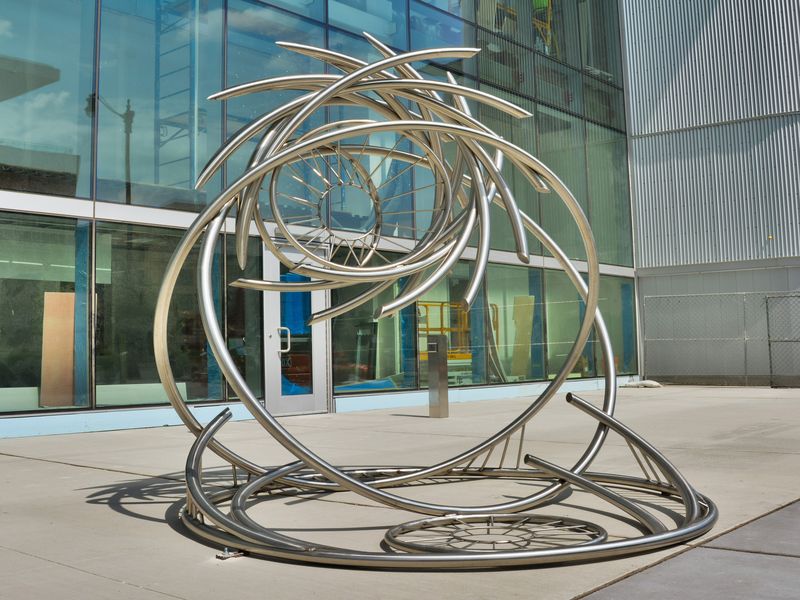
Utilizing 304 stainless steel tube in the construction of braces offers significant advantages due to its superior durability, corrosion resistance, and excellent formability.
In orthodontic applications, these tubes are used in the fabrication of dental braces, acting as robust metal brackets that provide effective teeth alignment. The excellent formability allows the shaping of these tubes as per individual dental structures, contributing to customized, comfortable fittings.
The corrosion resistance of 304 stainless steel ensures that these braces maintain their structure and function over long periods, even in the acidic environment of the mouth.
In orthopedic support applications, 304 stainless steel tubes can be used to create alignment devices, providing sturdy and reliable support to fractured or misaligned bones.
Beyond the realm of orthodontic and orthopedic applications, 304 stainless steel tube finds extensive use in structural supports due to its excellent mechanical properties. This application relies heavily on tube fabrication techniques, surface treatment, and welding techniques to ensure structural integrity, making the material selection crucial.
Tube fabrication: Precision and consistency in the fabrication process create tubes of the highest quality, contributing to the overall strength of the structure.
Surface treatment: This enhances the corrosion resistance of the tubes, augmenting their durability.
Structural integrity: The high strength-to-weight ratio of 304 stainless steel tubes guarantees the stability and longevity of the structures.
Material selection: Choosing 304 stainless steel for supports confirms a balance of cost-effectiveness, strength, and resistance to environmental conditions.
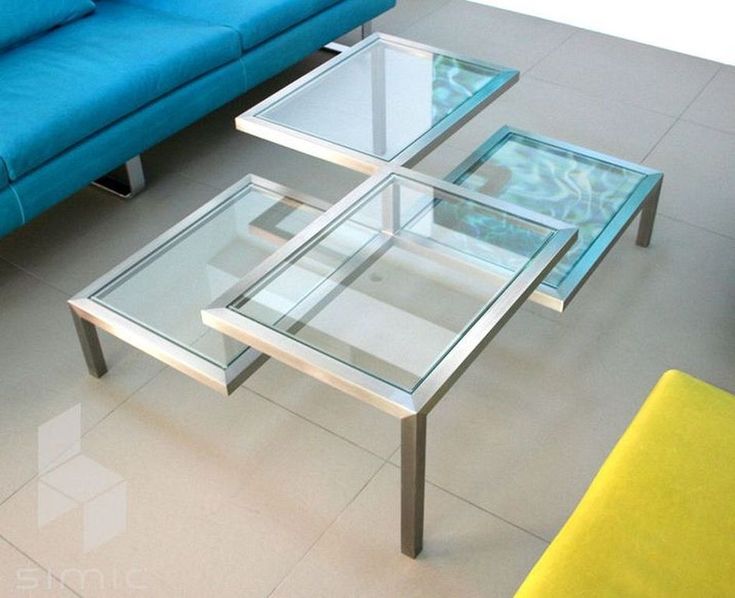
In the marine industry, 304 stainless steel tube is extensively applied due to its robust corrosion resistance and remarkable machinability, which are vital attributes in the harsh, corrosive sea environment.
The material's mechanical properties, such as tensile strength and yield point, are integral for enduring the intense pressures of marine applications. These tubes are often welded using techniques that maximize corrosion resistance, ensuring longevity amidst saltwater exposure.
Various surface finishes are utilized to further enhance the tube's resistance against material degradation. The 304 stainless steel's superior corrosion resistance, combined with proper welding techniques and suitable surface finishes, makes it an ideal material for marine construction, shipbuilding, and other maritime applications.

While the marine industry greatly benefits from the properties of 304 stainless steel tubes,stainless steel sanitary tube used in the food industry due to their resistance to acid corrosion and easy maintenance. The 304 stainless steel tubes meet the rigorous industry standards required for food safety and hygiene, making them an essential component in food production and processing.
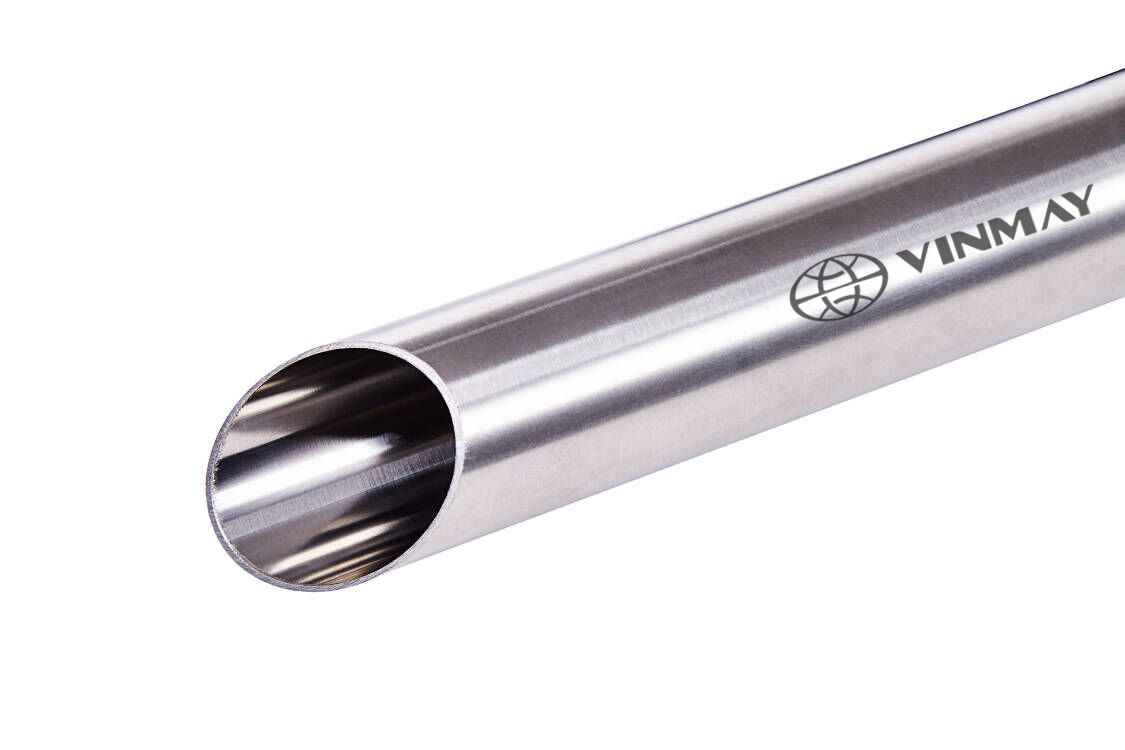
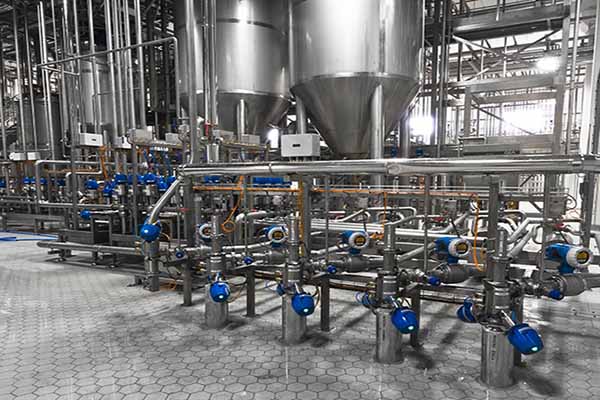
You may also like:
Understanding the Sanitary Pipe Meaning: Importance and Application Explained
Using 304 stainless steel tubes for a heat exchanger is a common and effective choice due to its favorable properties.
Corrosion Resistance: 304 stainless steel offers excellent resistance to a wide range of atmospheric environments and many corrosive media. This makes it suitable for use in heat exchangers that operate in harsh conditions.
Temperature Resistance: It maintains its strength and resistance to oxidation at temperatures up to about 870°C (1600°F), which is beneficial for high-temperature applications.
Mechanical Properties: It has good mechanical properties including tensile strength, yield strength, and hardness, providing structural integrity and durability.
Formability and Weldability: 304 stainless steel is easily fabricated into various shapes and is weldable, which is crucial for constructing complex heat exchanger designs.
Durability: The combination of strength and corrosion resistance ensures a long service life.
Efficiency: The thermal conductivity of 304 stainless steel, while not as high as that of copper or aluminum, is sufficient for many applications, and its durability often outweighs this limitation.
Maintenance: Its resistance to scaling and corrosion reduces maintenance needs and the risk of contamination.
Shell and Tube Heat Exchangers: 304 stainless steel tubes are frequently used in shell and tube heat exchangers for their robustness and corrosion resistance.
Plate Heat Exchangers: Though less common, 304 stainless steel can also be used in plate heat exchangers, particularly in environments where corrosion resistance is critical.
The distinction between 316 and 304 stainless steel lies in their chemical composition, cost, and physical properties, such as magnetism.
The 316 variant contains molybdenum, enhancing its resistance to corrosion, particularly in chloride environments, making it preferable for marine applications.
However, the 304 grade, while more susceptible to corrosion, is more economical, and its properties make it ideal for applications such as kitchen appliances and heat exchangers.
Comparing the cost of stainless steel 304 and 316, one must take into account the differences in alloy composition which significantly affect both the properties and the final price of these materials. Crucial cost analysis reveals that the addition of molybdenum in 316 increases its price, driven by its enhanced corrosion resistance.
Market trends show a higher demand for 316 in harsh environments due to its superior durability, reflecting in its price.
A cost comparison indicates 304 as a more economical choice, suitable for less corrosive applications.
Notable price fluctuations in these grades often result from changes in the prices of nickel and molybdenum.
Industry insights suggest a careful consideration of specific application requirements before deciding between these two grades.
Discover More:
Deciphering the Dynamics: Unraveling Stainless Steel Round Tube Prices
Shifting our focus to the magnetism of stainless steel, it is important to note that both 304 and 316 grades are inherently austenitic, making them non-magnetic in their natural state.
However, the magnetic properties of these grades can alter due to changes in their material composition during the manufacturing process. Cold working, for instance, can introduce magnetic behavior, especially in 304. This phenomenon can be observed through magnetism testing.
Yet, despite such changes, they typically retain their predominantly non-magnetic nature. Essentially, the alloy magnetism of 304 and 316 stainless steel remains minor and does not significantly impact their functional properties.
Understanding these nuances is crucial for industries where magnetism might influence material choice.
Distinguishing between stainless steel 304 and 316 primarily involves understanding their unique chemical compositions, which significantly influence their properties and applications.
In an alloy comparison, the key difference lies in the addition of molybdenum in 316, which enhances its resistance to pitting and crevice corrosion in chloride environments.
Regarding material properties and chemical composition:
Surface finishes and mechanical characteristics also vary; 316 generally has a smoother finish and exhibits higher strength at elevated temperatures. Understanding these differences is crucial for selecting the appropriate stainless steel for specific applications.
Understanding the distinct corrosion resistance properties of 304 and 316 stainless steel grades is crucial, given their differing alloy compositions previously discussed. Grade 316, thanks to its addition of molybdenum, offers a higher level of corrosion prevention, particularly against chlorides. This makes it ideal for applications exposed to salt water or corrosive chemicals. In contrast, 304, while still offering surface protection, is less resistant to such corrosive elements. Its usage is ideal in less aggressive environments. Both grades contribute to material durability, reducing environmental impact through long term sustainability.
| 304 Stainless Steel | 316 Stainless Steel |
|---|---|
| Less corrosion resistance | High corrosion resistance |
| Ideal in less aggressive environments | Ideal in high chloride environments |
| Good surface protection | Superior surface protection |
| Lower cost | Higher cost due to molybdenum |
When examining the applications of 304 stainless steel, it is critical to understand its unique characteristics and how they contrast with those of 316 stainless steel. The 304 grade, while less corrosion-resistant than 316, is more cost-effective and sufficiently durable for many applications.
Its versatility makes it a popular choice in various industries:
Despite its limitations compared to 316, 304 stainless steel remains a practical choice in many fields, including the aerospace industry.
Shifting our focus to 316 stainless steel, this grade exhibits characteristics and applications that distinguish it notably from its counterpart, 304. The primary difference lies in the addition of molybdenum, an alloy that drastically enhances corrosion resistance, especially for more saline or chloride-exposed environments.
This makes the 316 variety a go-to for marine applications. Moreover, its resistance to pitting and crevice corrosion in chloride environments, combined with its high stress-rupture, tensile strength, and high creep strength at elevated temperatures, prove optimal for chemical processing industries.
The durability enhancements of 316 also contribute to its various industrial uses, providing a robust and sustainable choice for a range of applications. Therefore, 316 stainless steel offers a significant upgrade over the 304 variant in terms of sustainability features and overall performance.
Recommend : 304 vs. 316 stainless steel sanitary tubing
316 Stainless Steel Rectangular Tube
Differences Between 316 and 316L Welded Stainless Steel Pipe
Understanding the difference between 201 and 304 stainless steel is crucial as their distinct chemical compositions and properties dictate their specific applications in various industries.
A key point of differentiation is the higher level of manganese in 201, making it less expensive, but also less resistant to corrosion when compared to 304.
Additionally, the variations in magnetism between the two types, due to their different structures and alloying elements, further distinguishes their use in different operational environments.
In analyzing the cost differences between 201 and 304 stainless steel, it's crucial to note that the key distinction lies in their respective compositions and the resulting impact on their physical properties and price points. The 304 grade, commonly utilized due to its excellent corrosion resistance and durability, is generally more expensive than the 201 grade, which has a slightly lower nickel content and is hence cheaper but less resistant to corrosion.
Cost analysis reveals that while the upfront cost of 304 may be higher, its longevity and durability could lead to long-term savings.
Market trends show a consistent demand for 304 grade, reflecting its industry standards acceptance.
Material comparison highlights the superior corrosion resistance of 304.
Production efficiency is better with 304 due to its workability, despite its higher cost.
When comparing the magnetism between the 201 and 304 stainless steel grades, it's important to note that while both are generally non-magnetic, their magnetic properties can vary depending on specific conditions such as cold working or heat treatment.
The 201 grade, due to its lower nickel content and higher manganese content, exhibits a higher degree of magnetism than the 304 grade. This is primarily due to changes in its material composition during the manufacturing process.
The demagnetization process can further enhance the non-magnetic characteristics of the 304 grade, reducing its magnetic susceptibility. While both grades retain their primary non-magnetic nature, factors such as temperature, pressure, and mechanical stress can subtly alter these properties.
While considering the relative magnetism of 201 and 304 stainless steel grades, it's crucial to highlight their different chemical compositions, as this significantly impacts their respective properties and applications.
201 stainless steel, often used in industrial applications, contains a lower percentage of nickel and higher manganese compared to its 304 counterpart. This alloy comparison results in a cheaper material with reduced corrosion resistance.
On the other hand, the 304 grade, with its increased nickel content and decreased manganese, exhibits superior corrosion mechanisms, making it a popular choice for food and pharmaceutical applications. However, this also leads to a greater environmental impact due to nickel mining.
Understanding the differences in corrosion resistance between 201 and 304 stainless steel requires an examination of their distinct alloy compositions and resultant properties. The 304 grade, with higher chromium and nickel content, provides superior corrosion resistance, offering enhanced surface protection.
However, the environmental impact of both alloys is similar. The 201 grade, while having fewer sustainability measures, remains a viable material alternative due to its cost-effectiveness.
The choice between the two often depends on application diversity, with 304 being preferred for applications demanding high corrosion resistance. Therefore, while both offer distinct advantages, understanding the corrosion characteristics of these stainless steel types is crucial for their effective and sustainable use in diverse applications.
Learn More:
Will 201 Stainless Steel Rust ?
In exploring the varied applications of 201 stainless steel, it is essential to delineate the key differences between this grade and its counterpart, 304 stainless steel, primarily in terms of their constituent elements and resultant properties. The 201 grade is a lower-cost alternative to 304, often used in various industrial applications where high temperature resistance and structural integrity are paramount.
To conclude, the 304 stainless steel tube, with its excellent welding and corrosion resistance properties, proves to be an economical and durable choice for various applications ranging from kitchen appliances to industrial processes. The tube manufacturing process for this grade of stainless steel is meticulous, ensuring high quality and integrity of the final product.
The surface finishing of 304 stainless steel tubes involves a rigorous polishing process, contributing to its aesthetic appeal and resistance to environmental elements. Welding techniques employed in the creation of these tubes are carefully selected to maintain the material's inherent properties and prevent structural weakness.
The corrosion prevention capabilities of 304 stainless steel tubes are noteworthy. The presence of chromium forms a passive layer when exposed to oxygen, effectively preventing corrosion and ensuring the tube's longevity.
